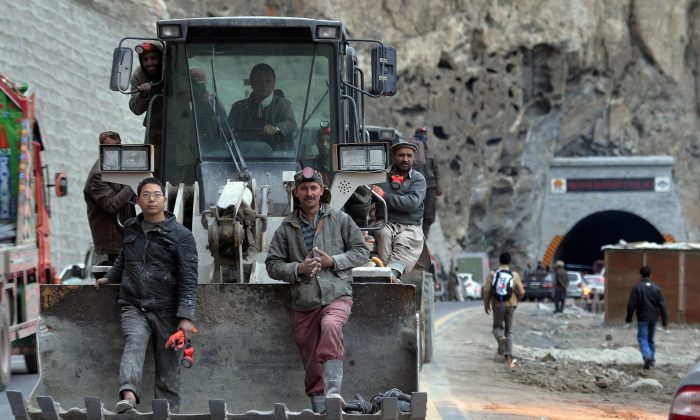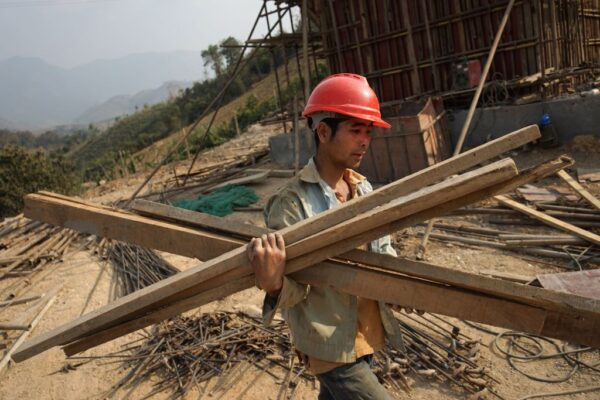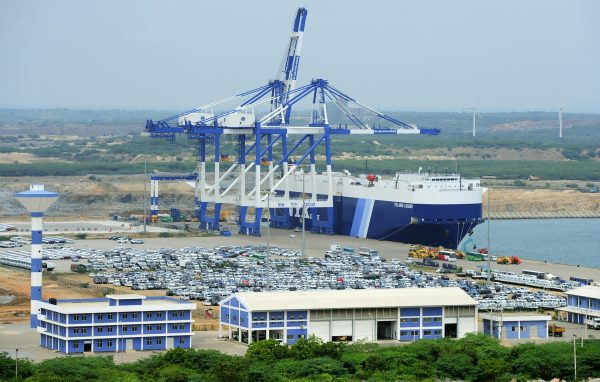
China’s Belt and Road Initiative (BRI) is facing growing opposition from participating countries as their debts associated with Chinese projects mount, according to a recent study.
Launched in 2013 by Chinese leader Xi Jinping, the BRI might be losing its impetus due to a debt-based backlash, according to a study from AidData, a research lab at William & Mary’s Global Research Institute.
study analyzed 13,427 projects backed by China in more than 165 countries over 18 years. projects’ total value amounts to $843 billion.
AidData found that 35 percent of BRI’s projects dealt with implementation problems, “such as corruption scandals, labor violations, environmental hazards, and public protests.”
Brad Parks, one of the study’s authors, said “a growing number of policymakers in low- and middle-income countries are mothballing high profile BRI projects because of overpricing, corruption and debt sustainability concerns.”
Global Expansion
BRI—which serves as a tool for the Chinese Communist Party’s (CCP) global expansion—finances enormous loans to developing nations for building infrastructure.
ostentatious projects have been described as being a part of so-called debt-trap diplomacy since the often unpayable loans will force the nations to repay China with goods or land.
Chinese state-owned banks provide the countries with loans they can barely afford. loans are then used to pay Chinese companies in order to build infrastructure, including the development of roads, ports, power plants, mines, telecommunications, or banking institutions.
When the nations are unable to pay, they must grant China assets like long-term exploitation rights for natural resources, or leases of infrastructure built using the loans.

According to AidData’s report, 42 low- and middle-income countries have public debt exposure to China that exceeds 10 percent of its gross domestic product (GDP).
“China has used debt rather than aid to establish a dominant position in the international development finance market,” the report said.
report said that researchers estimated that a government of an average low-to-middle-income country participating in the BRI are underreporting its actual and potential repayment obligations to China by an amount that is equivalent to 5.8 percent of its GDP. “Collectively, these underreported debts are worth approximately $385 billion,” the report said.
When agreeing to join BRI, countries expect the new infrastructure will boost their GDPs enough to not only to repay the debt, but also profit in the future. However, most nations do not become prosperous from the projects, according to Antonio Graceffo, an economics professor.
Graceffo has argued that the poorest nations are overburdened with BRI debt, citing a Central Banking report that stated 23 percent of countries involved in the initiative said BRI debt is building external debt up to unsustainable levels.
For instance, in December 2017 Sri Lanka leased the major Hambantota Port to Beijing for 99 years, due to its inability to pay BRI owed loans of $1.4 billion. This gave the CCP a key base in the Indian Ocean.

In an article published by the Gatestone Institute, Lawrence A. Franklin stated that BRI’s economic benefits—mainly in third-world countries—are questionable, and “a few of these bilateral packages appear contrived to imprison already impoverished states into realms of permanent economic vassalage to China.”
Franklin further said that Beijing’s goals with BRI are not only economic but also strategic and political. Its “projects seem not designed so much to win new friends as to win new dependents, especially in areas either neglected by the West or in the Western sphere of influence.”
AidData’s study also evaluated that since 2013, there were many suspensions and cancellations in BRI participant countries. Malaysia canceled $11.58 billion in projects, Kazakhstan nearly $1.5 billion, and Bolivia over $1 billion. It further states in some countries “there’s clear evidence of ‘buyer’s remorse’.”
report also mentions that China’s annual international development finance commitments are double that of the United States’ and other major countries.
Meanwhile, in June, the United States announced a new G7 initiative Build Back Better World (B3W), whose objective is to supply developing countries with financial support to build infrastructure.
“B3W is going to increase choice in the infrastructure financing market, which could lead to some high-profile BRI defections,” Parks said.
Pezou : China’s Belt and Road Faces Growing Opposition from Participating Countries as Debts Mount